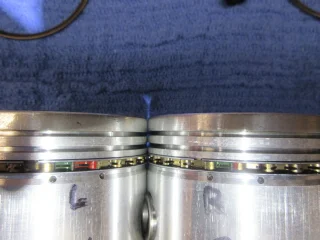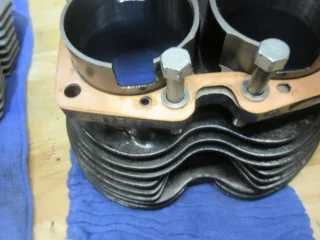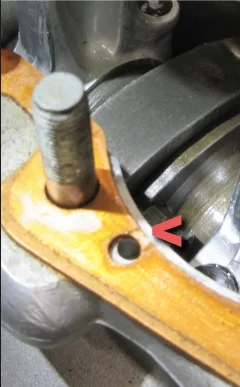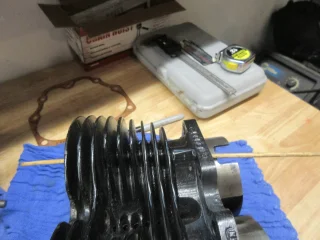Hi Brian, you mention putting a rod through the barrel and into the HEAD when surely the possible issue is at the base of the barrel where it meets the crankcase.
From the original photographs it looks like ( due to the circular mark on the gasket ) that the oil hole in the BASE of the barrel doesn't line up fully with the oil hole in the crankcase.
Imagine bolting your carburettor to the cylinder head, simple job of course but think what would happen if the original machining was wrong and the carb was offset by 3/4" ...... the engine would be starved of fuel / air on the one cylinder.
The greater the offset the less " flow "
What should happen is that ( excuse the simplistic description ) the exit hole of the carburettor should exactly line up with the inlet hole on the head casting in order to get the best possible " flow "
Similarly you should have the same perfect hole alignment of the oil holes, if oil cannot flow away from the head you get oiling problems.
Get a piece of rod / wooden dowel / bolt shank of the same diameter as the oil hole so that it fits snugly in the barrel and has a protrusion of say 1/2" .... when you lower the barrel down onto the crankcase ( no gasket ) you should see exactly how the two holes align with each other and if lucky the rod / dowel / shank will enter into the crankcase hole.
Some very small misalignment will be ok as long as the majority of the holes are together.
Another way :
First measure the distance from the portion of the barrel that sits inside the crankcase to the edge of its oil hole
Now measure from the inside edge of the crankcase to the edge of the oil hole
Comparing these measurements will tell you how well or otherwise the holes align.
I realise that some of the issue could be from using the wrong gasket which obscured the drain hole and that a correct gasket could get you running well again but if there is an issue of hole alignment it would be better to find out now before final assembly.
Time is cheap and ultimately less stressful.
As an aside and just thinking out loud .... often you hear folks say about oiling and that after fitting new valves / guides / seals they still have an oiling / exhaust smoke issue ..... the puzzlement often being put down to British bike " character " as a way of excuse ...... this potential issue of yours could be the answer for many a brit bike owner.
Geoff






